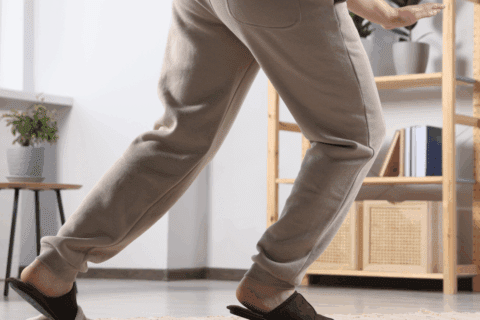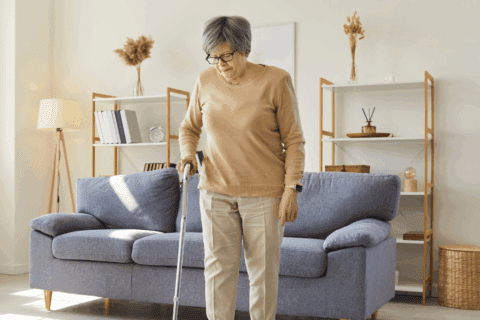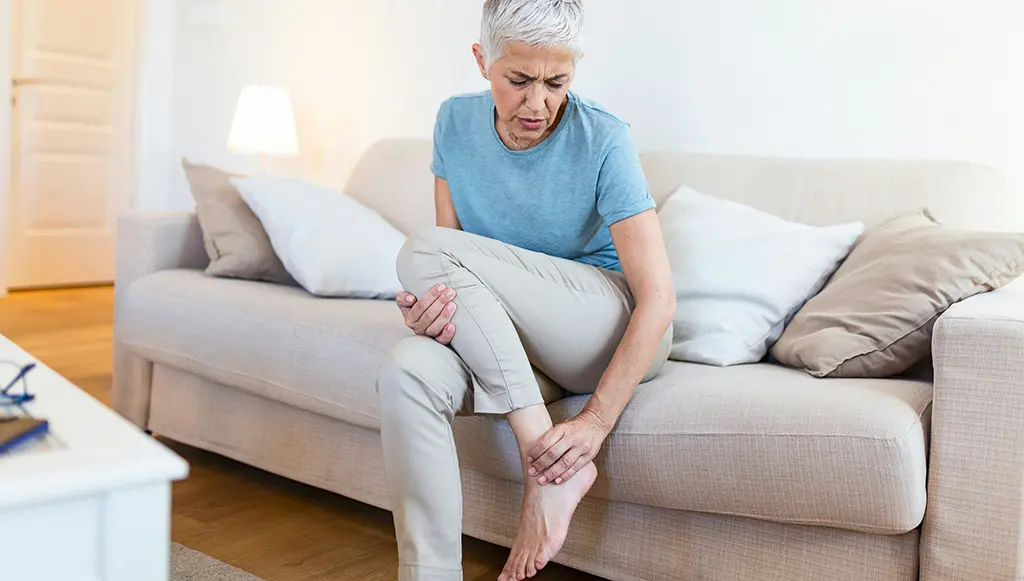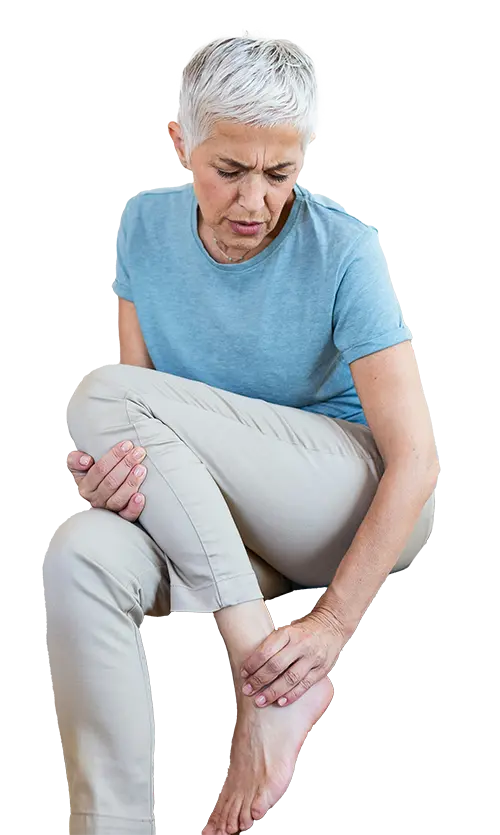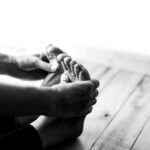
Living with arthritis in your lower limbs can be a daily struggle, affecting your ability to walk, stand, or even perform basic activities comfortably.
The constant pain, stiffness, and swelling in your feet, ankles, and knees can significantly impact your quality of life.
However, a podiatrist—a healthcare professional who specialises in treating conditions affecting the feet and lower limbs—can play a vital role in managing your arthritis symptoms and helping you maintain mobility and independence.
Like any joint in the body our feet, ankles and toes can all be affected by arthritis. Many different types of arthritis can affect these areas and cause pain, swelling and stiffness. These symptoms can also make standing and walking hard. Sometimes, arthritis in your toes and feet can also make them change shape.
Luckily, there are treatments available to help, such as seeing a podiatrist.
Seeing a Podiatrist
Podiatrists are great allied health professional to see if you are struggling with foot, ankle or toe arthritis. Podiatrists are experts in dealing with the prevention, diagnosis and treatment of conditions of the lower limbs and feet (almost everything below the knee).
Podiatrists will use a range of techniques to treat conditions like arthritis. This can include:
- physical therapy,
- gait analysis,
- braces,
- strapping and other aids like orthotics.
See below some tips on how a podiatrist can help you.
Assessment & Diagnosis
The first step in managing arthritis in your lower limbs is a thorough assessment and diagnosis by a podiatrist. They will carefully evaluate your symptoms, medical history, and the condition of your feet and lower limbs.
This assessment may include physical examinations, gait analysis, and imaging studies like X-rays or MRIs. The goal is to determine the extent of joint damage, identify specific areas of concern, and develop a tailored treatment plan to address your unique needs.
Customised Footwear and Orthotics
One of the most effective ways a podiatrist can help manage arthritis in the lower limbs is by providing customised footwear and orthotic devices. Properly fitting shoes with good arch support and cushioning can reduce pressure on arthritic joints and reduce pain during walking.
Orthotics, which are custom-made insoles, can provide additional support, correct biomechanical issues, and redistribute weight away from painful joints.
For people with severe arthritis or deformities like bunions or hammertoes, a podiatrist may recommend specially designed orthopedic shoes. These shoes are crafted to accommodate your foot shape and provide maximum comfort and protection, helping to prevent further joint damage and improve mobility.
Pain Management Techniques
Podiatrists are skilled in various pain management techniques that may bring relief to those with arthritis in their lower limbs. These may include:
- Physical Therapy: A podiatrist can prescribe exercises and stretches to improve joint flexibility, strengthen muscles around the affected joints, and reduce stiffness. Physical therapy can also help improve your gait, reducing the strain on your lower limbs.
- Massage and Manual Therapy: Gentle massage and manual therapy techniques can help increase blood flow, reduce muscle tension, and reduce pain in the lower limbs.
- Topical Treatments: Your podiatrist may recommend the use of topical creams or ointments containing anti-inflammatory or pain reliving ingredients to provide localised pain relief.
- Medication: In some cases, a podiatrist may suggest over-the-counter or prescription medications to help manage pain and inflammation. They can also coordinate with your primary care physician or rheumatologist to make sure your medication regimen is effective and safe.
Joint Protection and Mobility Aids
A podiatrist can offer valuable advice on joint protection strategies to help you minimise strain on your lower limbs and prevent further joint damage.
This may include recommendations on how to modify your activities, use proper body mechanics, and take frequent breaks during tasks that involve standing or walking.
A podiatrist can provide or recommend mobility aids such as canes, walkers, or braces. These devices can help reduce the load on your arthritic joints, improve stability, and improve your overall mobility.
Your podiatrist will work with you to make sure the mobility aid is correctly fitted and that you know how to use it effectively.
Surgical Consultation and Referral
In cases where conservative treatments are not enough to manage your arthritis symptoms, a podiatrist may discuss surgical options with you. Surgery might be considered if there is severe joint damage, persistent pain, or deformities that interfere with your daily life.
A podiatrist can perform certain foot and ankle surgeries, such as joint fusion or osteotomy, to correct deformities and relieve pain.
For more complex surgical needs, your podiatrist may refer you to an orthopedic surgeon who specialises in lower limb procedures. They will work closely with the surgeon to make sure you receive comprehensive care throughout the surgical process and recovery.
Education and Self-Management
Education is a key component of arthritis management, and a podiatrist can provide you with the knowledge and tools to better understand your condition and take control of your health.
They can educate you on the importance of weight management, maintaining an active lifestyle, and avoiding activities that could worsen your symptoms.
Your podiatrist can also teach you self-management techniques, such as performing daily stretches, applying ice or heat to affected joints, and monitoring your symptoms.
Find a Podiatrist Near You
There are many Podiatrists around Queensland that work both publically and privately. To see an allied health professional, speak to your GP about organising a GP Management Plan. GP management plans (GPMP) and team care arrangements (TCA) can help people with a chronic health condition to access needed care from a range of allied health professionals.
To find a podiatrist near you can search The Australian Podiatry Associations Find and Podiatrist search engine can help you find one in your area.
The Australian Podiatry Association provide a wide range of information on podiatrists and the different ways they can treat arthritis. Access some of these helpful resources in the links below:
- What is Podiatry (Australian Podiatry Association)
- Foot Health Information Sheets (Australian Podiatry Association)
Arthritis in the lower limbs can be a challenging condition to live with, but with the right care and support, it is possible to manage your symptoms effectively and maintain your quality of life.
A podiatrist plays a crucial role in this process by providing personalised care that addresses your specific needs, from pain management and customised footwear to education and self-management strategies.
If you are struggling with arthritis in your feet, ankles, or knees, consider consulting a podiatrist. With their expertise, you can take proactive steps toward managing your condition and achieving better mobility and comfort in your daily life.
More information on foot arthritis
Related information and resources on our website
- Feet and Arthritis information sheet
- A Real Pain in the Foot (Foot pain and RA)
- Demystifying Foot Pain
January 2021 | Updated August 2024



